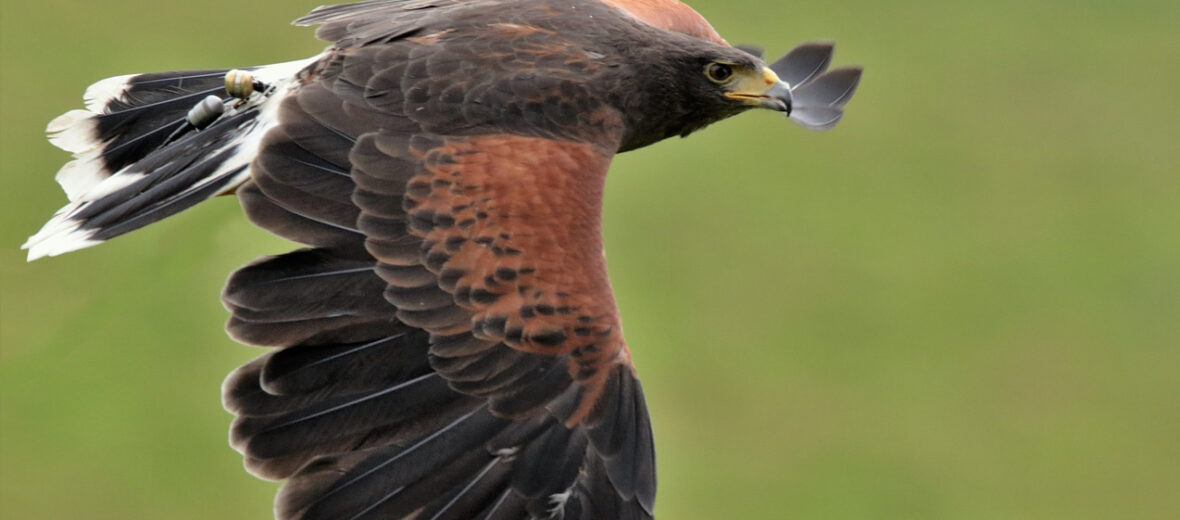
The Harris’s hawk, aka Dusky hawk, Bay-winged hawk, or Peuco, is a raptor found from the southwestern United States on down through Mexico, Central America, and on into South America. These intelligent and social birds of prey are popular for use in falconry, as they are easily trained. Due to their numbers, these birds are listed as Least Concern by the IUCN, but their numbers are decreasing in the wild.
First the Stats…
Scientific name: Parabuteo unicinctus
Weight: Up to 2.2 lbs.
Length: Up to 18 inches
Wingspan: Up to 43 inches
Lifespan: Up to 20 years
Now on to the Facts!
1.) These birds prefer semi-desert, savannah, shrubland, sparse woodland, marshes (with some tree cover), and mangrove swamps.
2.) Unlike other raptors, Harris’s hawks live in groups. They are led by a dominant female, then a dominant male; followed by the other subordinates.
3.) They even raise their young in cooperative groups.
4.) Harris’s hawks, like many other raptors (sans most owls), are diurnal (active during the day).
5.) Their vision is up to 8 times greater than a human’s.
But wait, there’s more on the Harris’s hawk!
6.) The hunting style of these raptors is comprised of a single or pair of birds flushing out prey and herding it towards the others in their group, to assist in the kill.
7.) They are sexually dimorphic, like most all raptors, in that females are up to 35% larger than males.
Did you know…?
John James Audubon named the Harris’s hawk in honor of his friend and ornithological companion Edward Harris.
8.) A group of Harris’s hawks is called a aerie, cast, kettle, boil, or lease.
9.) Rabbits, rats, mice, other birds, and reptiles (like lizards and snakes) make up their diet.
10.) These birds are predominantly monogamous (mate for life) but it is also surmised that they exhibit polyandrous behaviors, where the female will mate with several males.
But wait, there’s still more on the Harris’s hawk!
11.) Females produce 2 – 3 clutches of eggs per year.
12.) The female will lay up to 4 eggs that hatch in up to 36 days.
Did you know…?
Sadly, electrocution causes the loss of many of these hawks. They gather in large groups often on electrical transformers where they are electrocuted.
13.) Like most birds, the eyas (hatchlings) are born altricial (helpless).
14.) Harris’s hawks display a behavior called “backstanding” or “stacking”, where 1 hawk will perch on a cactus, and 2 – 3 other hawks will stand on its back. It is thought that they do this to get a better view of their surroundings, while perched.
15.) Predators of the Harris’s hawk include coyotes, great horned owls, ravens, and bobcats.
Now a Short Harris’s Hawk Video!
Be sure to share & comment below! Also, check out the Critter Science YouTube channel. Videos added frequently!
Want to suggest a critter for me to write about? Let me know here.



